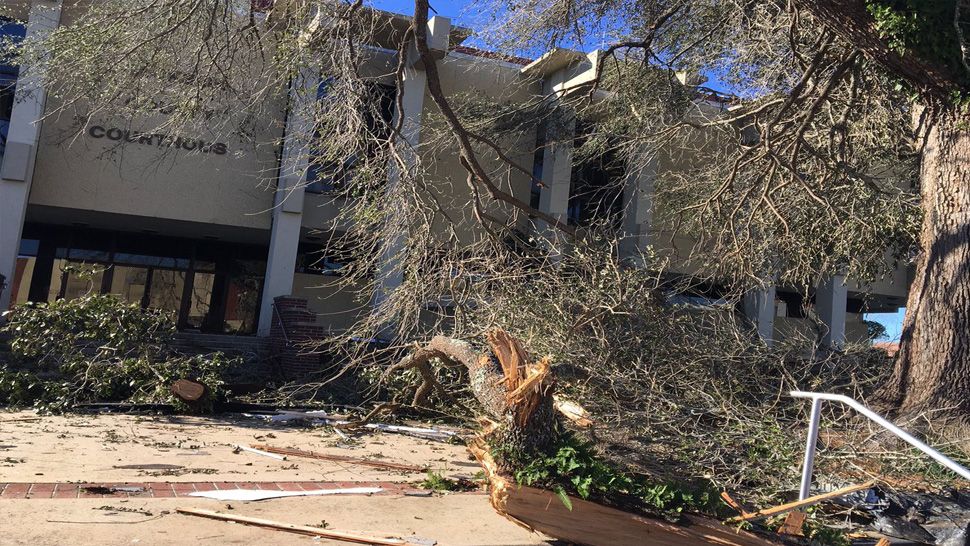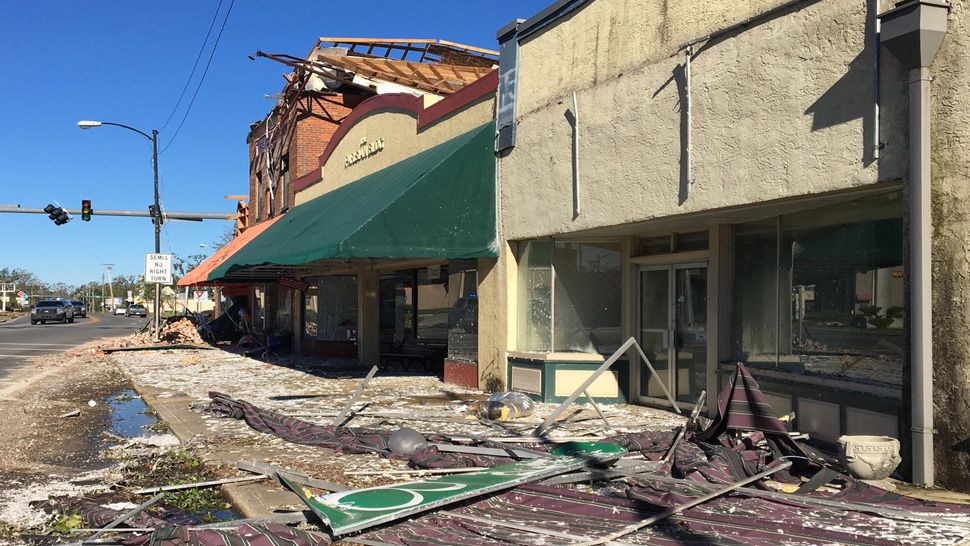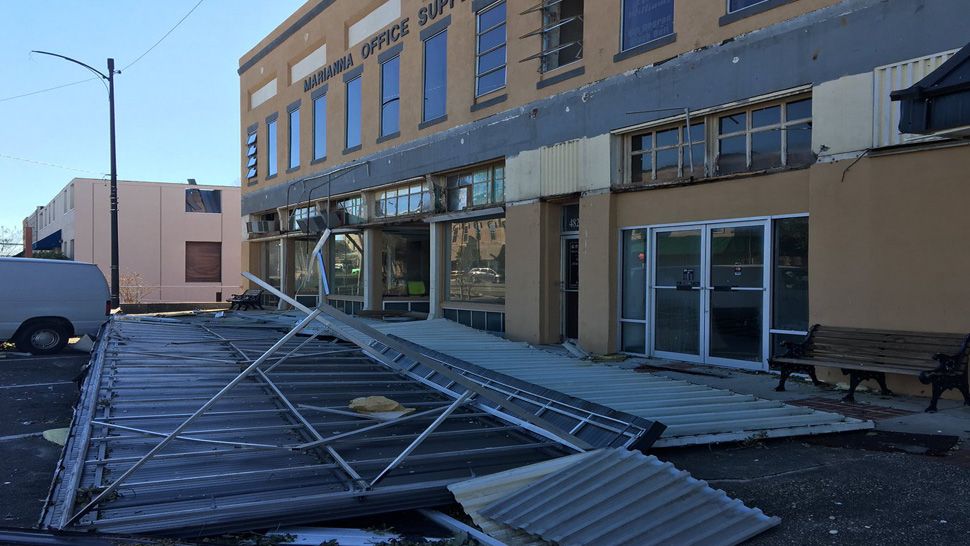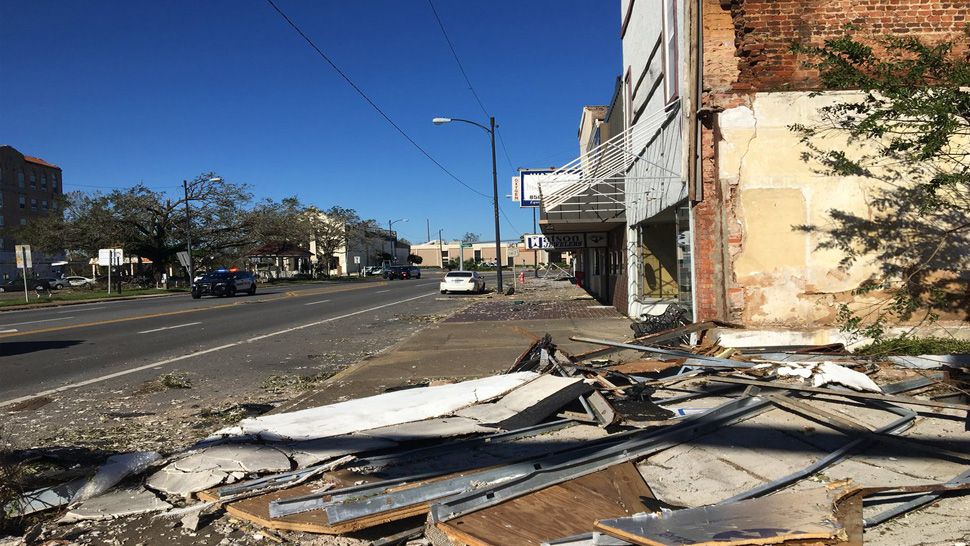PANACEA, Fla. — Search and rescue teams looked for bodies through a ruined landscape of smashed homes and piles of sand Friday, while more deaths were reported in Virginia, 600 miles from where Hurricane Michael made landfall.
Michael, so powerful that it remained a hurricane for 12 hours after making landfall in Mexico Beach, thrashed the Carolinas and Virginia and was growing stronger again over the Atlantic.
Authorities reported 13 deaths as of Friday, with Virginia’s state medical examiner ruling four drownings and the firefighter’s death were storm-related. High winds, downed trees, streets inundated by rising waters and multiple rescues of motorists from waterlogged cars played out in spots around Virginia and neighboring North Carolina.
- INTERACTIVES:
- WEATHER BLOG: Was Michael a "Surprise?"
- TRACKING THE TROPICS: Watches, warnings, forecasts, spaghetti models
- LIVE: Twitter updates from Spectrum News reporters
- LIVE: Watch Spectrum Bay News 9 online
- SIGN UP: Alerts about Hurricane Michael
- Watch our Tropics updates each hour at :49
Row after row of beachfront homes were so obliterated by Michael's surging seas and howling winds that only slabs of concrete in the sand remain, a testament that this was ground zero when the epic Category 4 hurricane slammed ashore at midweek.
The destruction in this and other communities dotting the white-sand beaches is being called catastrophic — and it will need billions of dollars to rebuild.
All told, more than 900,000 homes and businesses in Florida, Alabama, Georgia and the Carolinas are without power.
FEMA Administrator Brock Long said crews are on the ground throughout the Panhandle.
"The (gulf) rose 14 feet, with wave action on top and shoved buildings out of the way," Long said. "We hope to have 100 percent of the initial search and rescue missions complete.
"We have over 30,000 people in the private sector trying to get the power back up."
Late Thursday, convoys of military teams and power crews started rolling in to coastal towns hit hard by Michael.
In the NOAA photos below, you can use the slider tool to see before and after photos from Mexico Beach and Cape San Blas.
Before the hurricane, Highway 98 would have taken you all the way in to Apalachicola and then toward Panama City Beach - but at Carabelle Beach the road is washed out.
It was washed out in the same place back in 2005 after Hurricane Dennis and it took months back then for that section of road to be repaired.
As the work continues to clear roads - so does the work to restore power to many of these coastal towns that are still in the dark... some of them like here in Panacea may not get power back until early next week.
In one community, Panama City, most homes were still standing, but no property was left undamaged. Downed power lines and twisted street signs lay all around. Aluminum siding was shredded and homes were split by fallen trees. Hundreds of cars had broken windows. The hurricane damaged hospitals and nursing homes in Panama City, and officials worked to evacuate hundreds of patients.
"So many lives have been changed forever. So many families have lost everything," said Florida Gov. Rick Scott, calling it "unimaginable destruction."
An insurance company that produces models for catastrophes estimated Michael caused about $8 billion in damage. Boston-based Karen Clark & Company released that estimate Thursday, which includes privately insured wind and storm surge damage to residential, commercial and industrial properties and vehicles.
It doesn’t include losses covered by the National Flood Insurance Program.
Now, officials fear the death toll will only rise as rescue teams get around storm debris blocking roads and reach isolated areas.
Information from the Associated Press was used in this report.






